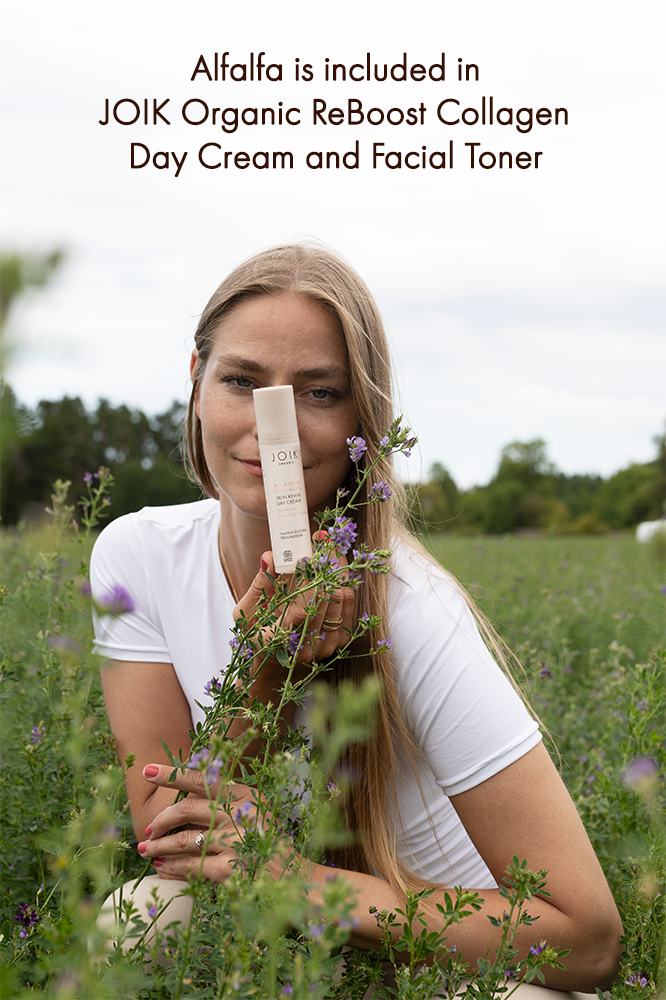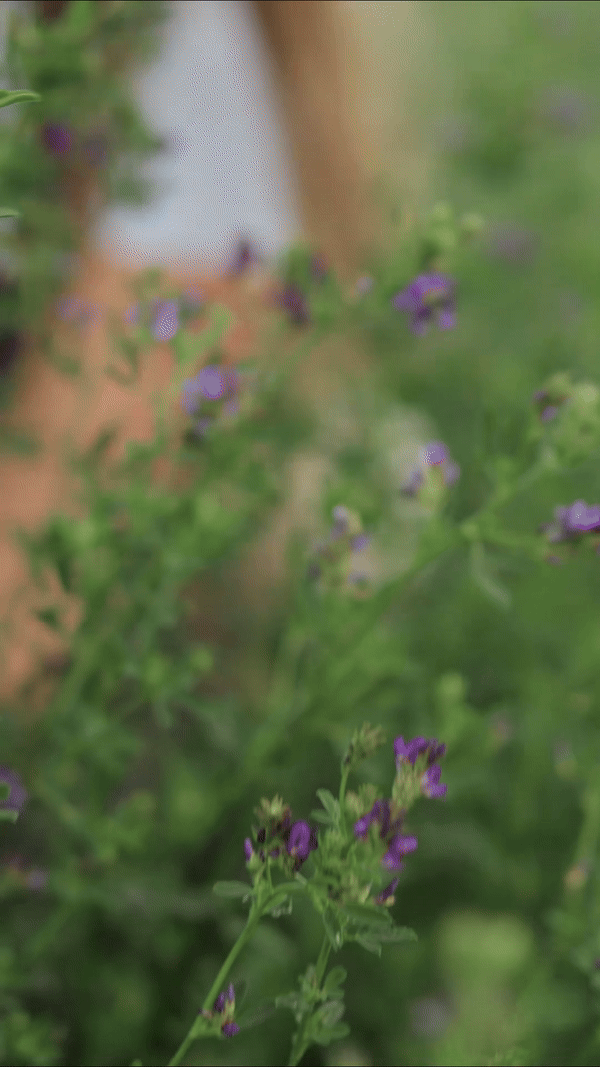The power of Estonian Plants
Estonia, recognized as the country with the second cleanest air in Europe, is a land rich in wild nature and extensive organic farming areas. About 20% of our agricultural land consists of organic farms, and the potential area for organic forest gathering in Estonia is 2.2 million hectares of forest land, covering more than half of the country’s area. This means that 53% of Estonia’s land is organic. The food industry has made good use of this, and our organic food is highly valued. Gradually, local organic production is also making its way into the cosmetics industry, and we are especially pleased to see more producers offering organic raw materials suitable for cosmetics, compliant with the COSMOS standard. Naturally, we take advantage of this opportunity and bottle the finest local ingredients.
Using local ingredients in cosmetics offers several benefits—it reduces environmental impact, supports sustainable practices, and boosts the local economy.
Which ingredients can we source from right here, close to home?
Alfalfa, also known as Medicago sativa, comes to us in extract form from Estonia’s biggest island Saaremaa, supplied by a wonderfully named company called Korilane (gatherer). But what makes this purple-flowered plant, spreading across vast green fields, so special? Alfalfa has been a well-known crop since the 16th century. Originally, this plant from Persia was called “al-fac-facah,” meaning “the father of all foods.” What sets alfalfa apart is that all parts of the plant—leaves, stems, roots, and seeds—are usable. In traditional medicine, alfalfa was used as a body cleanser, known to detoxify the digestive tract and eliminate toxins and waste, as well as to treat digestive issues, jaundice, blood clotting disorders, and insect bites.
Alfalfa is a rich source of phytonutrients, vitamins A, C, E, and K4, minerals, and 14 amino acids. Its high vitamin A content is especially beneficial for the skin, and its silica and calcium content supports bones, nails, hair, and teeth.
Benefits of alfalfa in skincare:
- Prevents signs of aging by stimulating collagen production in the skin
- Soothes skin redness and irritation
- Has anti-inflammatory properties


Furcellaran, also known as red algae, also comes from Saaremaa. Est-Agar AS is currently the only known producer in the world of the unique additive furcellaran, derived from the red algae Furcellaria lumbricalis. This red algae, which grows in the coastal waters of Estonia, is a renewable natural resource, making it especially eco-friendly. Red algae is widely used in the food industry as a gelling agent, and many sweet lovers have likely consumed it in products like marmalade candies. We are not the only ones in the cosmetics world who have discovered furcellaran. For example, the world-famous brand Clarins also uses furcellaran sourced from Estonia.
Benefits of furcellaran in skincare:
- Moisturizes and soothes the skin
- Speeds up cell renewal, improving skin texture
- Has anti-inflammatory properties
- Helps reduce fine lines and wrinkles, giving the skin a smoother and firmer appearance.

Birch sap comes to us from Kirbu village in Võrumaa, south of Estonia. The beneficial properties of birch sap were well known to ancient Estonians, and a springtime birch sap cure was a great boost for a body fatigued by winter. Birch sap is rich in vitamins and minerals, containing vitamin C, antioxidants, flavonoids such as quercetin, as well as calcium, magnesium, silica, sodium, and potassium, along with trace elements like copper, iron, manganese, and zinc.
One test-tube study found that using birch sap in skincare products significantly increased the production of skin cells called keratinocytes, suggesting that birch sap may help rejuvenate the skin. Birch sap is a powerful antioxidant and slows down the aging process. It stimulates cell growth and protects skin cells from oxidative stress caused by UV radiation, pollution, and inflammation.
.
Benefits of birch sap in skincare:
- Rich in vitamins and minerals that protect the skin from environmental damage
- Speeds up cell renewal and prevents aging, leaving the skin firmer and more radiant
Birch sap is included in all products of the JOIK Organic Moisture Magnet series. See these products HERE
Lingonberries, cloudberries, and sea buckthorn – we use all of these Nordic berries in our various products. While cloudberries and sea buckthorn come from Estonia as well as other Nordic countries, our lingonberry extract is once again sourced from Estonia’s biggest island Saaremaa. Every child knows that the pleasantly tart lingonberry is rich in vitamins. But lingonberries, which grow in the cold northern climate, have also evolved to protect themselves from the cold with a range of beneficial phytochemicals. The anthocyanin that gives lingonberries their deep red color is a powerful antioxidant and has anti-inflammatory properties.
Benefits of lingonberries in skincare:
- Provides strong moisturizing effects
- Helps even out skin tone and reduce hyperpigmentation
- Promotes collagen production in the skin
As such, lingonberries offer protective and soothing benefits for the skin. The omega fatty acids in lingonberries help retain moisture in the skin. Studies show that lingonberry extract significantly improves skin elasticity and evens out skin tone.

Saaremaa lingonberry is in all products of the JOIK Organic Re-Boost Glow series.
All new skincare products available at an introductory price until the end of September HERE
References: